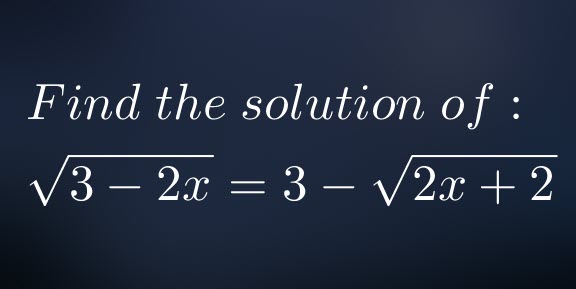
Proportions and scientific notations
Before discussing proportions, let’s revisit the ![]() .
.
Percent:
Usually we see fractions where the numerator is ![]() . This is mainly the case of decimal fractions and some other common fractions. We have already covered the fractions.
. This is mainly the case of decimal fractions and some other common fractions. We have already covered the fractions.
When we have a fraction, ![]() is the number
is the number ![]() . Now when dealing with
. Now when dealing with ![]() , the whole is represented by one hundred.
, the whole is represented by one hundred. ![]()
If during a given calculation we get the fraction ![]() , we can say that the result is also
, we can say that the result is also ![]() . To find the percentage, we simply multiply our result by 100. In this case we get 20. But 20 is not equal to 0.20. We have to add the percent sign: 20%. This is simply
. To find the percentage, we simply multiply our result by 100. In this case we get 20. But 20 is not equal to 0.20. We have to add the percent sign: 20%. This is simply ![]() .
.
Unfortunately, fractions do not always have ![]() as numerator. However, knowing how to deal with fractions, we can always get the percentage.
as numerator. However, knowing how to deal with fractions, we can always get the percentage.
Exemple: ![]()
![]() . This gives us
. This gives us ![]() .
.
In many cases, we can easily find the factor to be multiplied by the denominator to get 100 and multiply the numerator by the same value.
Look at the following examples:
![]()
![]()
Always round your digits per the problem you are solving. If there is no requirement, always indicate what rounding you used.
There was no requirement and we got ![]() . After calculating the percentage we get
. After calculating the percentage we get ![]() to the
to the ![]() .
.
To change a percent to a decimal, just make the division by 100. ![]()
To find a percent of a number, you multiply the decimal expression of the percent by the given number.
In other words, you multiply the percent value without the sign by the given number and divide the result by 100.
What is ![]() of 300? Well, a good mathematician will quickly see 48. We simply do the following:
of 300? Well, a good mathematician will quickly see 48. We simply do the following:
![]() then continue to
then continue to ![]() .
.
Problem: Find the price of a ![]() book that is being sold at a
book that is being sold at a ![]() discount.
discount.
Solution: We calculate the value of the discount: ![]() of 180.
of 180.
![]() or simply
or simply ![]() .
.
Now the sale price is: ![]() .
.
Now back to proportions
The idea of equivalent fractions is a good starting point to study proportions.
To grasp the notion of ![]() , we have to equate one comparison with another of equal value. The resulting equation is called a proportion. Solving a proportion is a simple cross multiplication.
, we have to equate one comparison with another of equal value. The resulting equation is called a proportion. Solving a proportion is a simple cross multiplication.
A ratio is a comparison of two different things. Ratios can be noted ![]() or even as a fraction
or even as a fraction ![]() .
.
If Bill has 5 pens and Jack has 8 pens, the ratio of Bill’s pens to Jack’s pen is ![]()
Now we can extend the notion to proportions. A proportion is simply an equating of two ratios
Example: ![]() . Did you see our equivalent fractions in this?
. Did you see our equivalent fractions in this?
Means and Extremes:
When we have a proportion, the two numbers closest to the ![]() sign are the
sign are the ![]() and the two farthest are the
and the two farthest are the ![]() .
.
Example: ![]() .
.
8 and 15 are the means.
5 and 24 are the extremes.
The cross-multiplication is: Product of the means = product of the extremes.
Problem: ![]() of the cars in a parking lot yielded 120 cars. How many cars were in the parking lot?
of the cars in a parking lot yielded 120 cars. How many cars were in the parking lot?
Solution: let ![]() be the total number of the cars in the parking lot.
be the total number of the cars in the parking lot.
![]()
![]()
![]()
![]() that means 300 cars were parked in the lot.
that means 300 cars were parked in the lot.
This gives us enough understanding to deal with ratios in Geometry.
Scientific notations:
Scientific notations are widely used and it is necessary to take a peek at how to deal with them.
When numbers are very large or very small, we need to use scientific notations.
One golden rule is to have the first part before the decimal between 1 and 10.
Rules:
For very large numbers, move the decimal to the left until the above condition is met. Count how many times the decimal was moved. This is the exponent of the 10.
Example: 96563000000005
We move the decimal 13 times to the left.
Finally we have:
![]()
Another example:
7600000.
We move 6 times to the left and we get ![]() notice that the zeros where dropped here.
notice that the zeros where dropped here.
For very small numbers, move the decimal to the right until the above condition is met. Count how many times the decimal was moved. This is the negative exponent of the 10.
Example:
0.0000786
Move to the right 5 times to just after the 7.
We get: ![]()


Be the first to comment